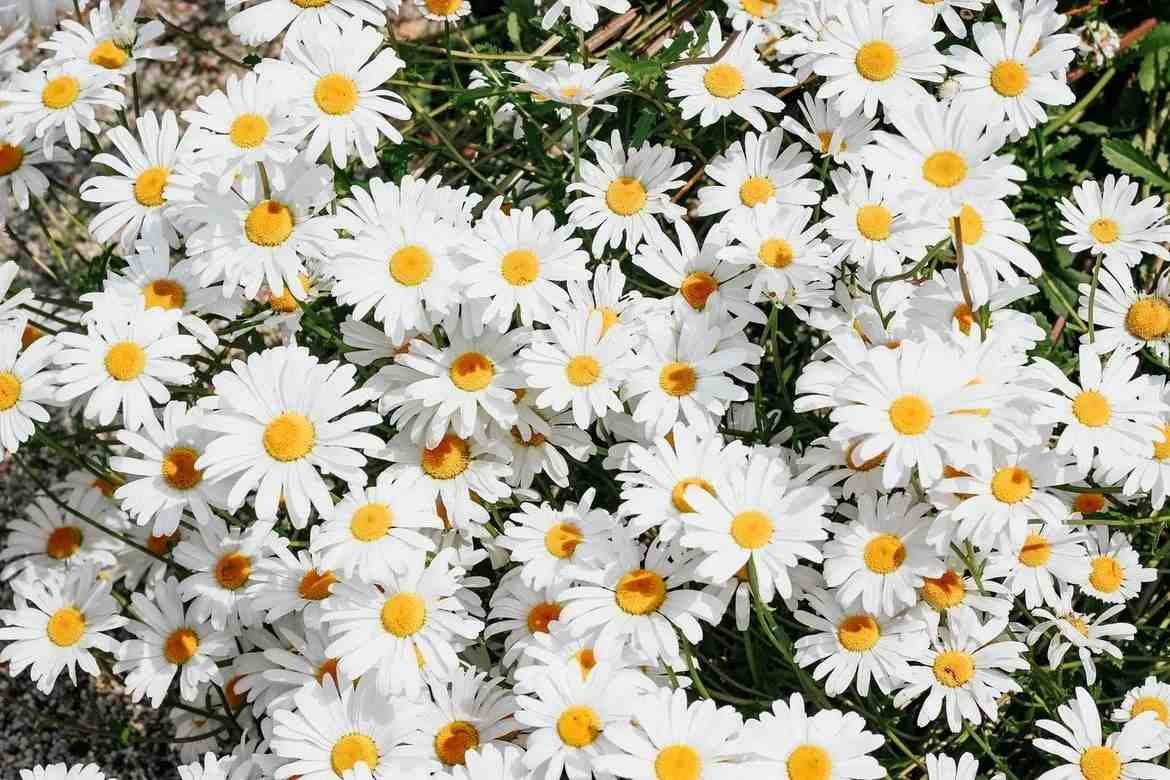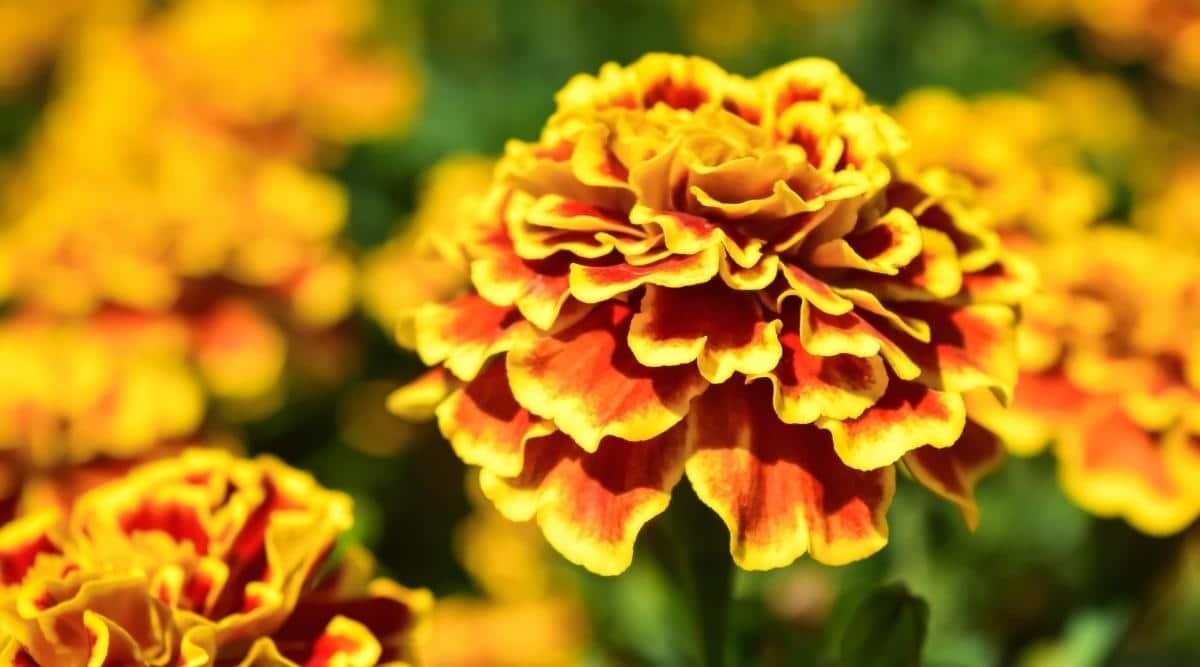Carnation Flower Facts, Uses, Cultivation, Botany, Historical Significance

Carnation Flower Facts | Description | Distribution and Habitat | Botany and evolution | Cultivation | Uses | Cultural | Interesting facts | frequently asked questions about Carnation
Welcome to the wonderful world of Carnations, where beauty and elegance meet in a delicate dance of colors and fragrances. With its intricate petals and stunning hues ranging from pure white to deep crimson, the Carnation has captured the hearts of flower enthusiasts for centuries. Whether you’re looking for a classic addition to your garden or a sophisticated centerpiece for your special occasion, the Carnation is the perfect choice. Join us as we explore the captivating world of this beloved flower, and discover why the Carnation is truly a timeless treasure.
Taxonomy of Carnation
| Kingdom | Plantae |
|---|---|
| Clade | Angiosperms |
| Clade | Eudicots |
| Order | Caryophyllales |
| Family | Caryophyllaceae |
| Genus | Dianthus |
| Species | Dianthus caryophyllus |
Morphology of Carnation
| Feature | Description |
|---|---|
| Pedicel | Slender stem that supports the flower |
| Calyx | Five fused sepals that form a cylindrical tube |
| Corolla | Five petals that are typically fringed at the edges |
| Stamens | Five to ten in number, with long filaments and yellow anthers |
| Pistil | Single, with a superior ovary and three stigmas |
| Inflorescence | Terminal cyme with one to several flowers |
| Color | Wide range of colors, including white, pink, red, yellow, and purple |
| Fragrance | Sweet and spicy |
| Size | Typically 3-5 cm in diameter |
| Leaves | Linear to lanceolate in shape, with a bluish-green color |
| Stem | Herbaceous, up to 80 cm tall |
| Root | Fibrous |
| Fruit | Oblong capsule containing numerous small seeds |

Description of Carnation
The Carnation is a popular flowering plant that belongs to the Dianthus genus in the Caryophyllaceae family. It is a herbaceous perennial that can grow up to 80 cm in height and has linear to lanceolate leaves with a bluish-green color. The flowers of the Carnation are typically 3-5 cm in diameter and come in a wide range of colors, including white, pink, red, yellow, and purple. The petals are typically fringed at the edges and have a sweet and spicy fragrance.
The Carnation flower has a distinctive morphology, with a slender pedicel that supports the flower, a cylindrical calyx made up of five fused sepals, and a corolla of five petals. The stamens are typically yellow with long filaments and yellow anthers, while the pistil is single and has a superior ovary and three stigmas. The inflorescence of the Carnation is a terminal cyme with one to several flowers.
The Carnation is a versatile flower that is often used in floral arrangements, bouquets, and as a cut flower. It is also a popular choice for gardens and is often grown as an ornamental plant. The Carnation has a rich cultural history and is often associated with love, fascination, and distinction. In some cultures, different colors of Carnations have different meanings, such as white Carnations representing pure love and pink Carnations representing a mother’s love.
Overall, the Carnation is a beautiful and fascinating flower that has captured the hearts of people for centuries. Its unique morphology, wide range of colors, and rich cultural history make it a popular choice for many occasions.
Distribution and habitat of Carnation
The Carnation flower is native to the Mediterranean region, including southern Europe, North Africa, and the Middle East. However, it has been cultivated and naturalized in many other parts of the world, including North and South America, Asia, and Australia. It is commonly grown as an ornamental plant in gardens and greenhouses, and as a cut flower for use in floral arrangements and bouquets.
In the wild, the Carnation flower can be found in a variety of habitats, including meadows, grasslands, rocky slopes, and cliffs. It prefers well-drained soils and is tolerant of dry and hot conditions. In some regions, the Carnation has become invasive and can outcompete native plant species.
The Carnation is a hardy plant that is able to survive in a range of climates, from temperate to subtropical. It is often grown as a perennial, but can also be grown as an annual in colder climates. The Carnation requires full sun to grow and bloom, and benefits from regular watering and fertilization.
Overall, the Carnation is a widely distributed and adaptable flower that can be found in many parts of the world. Its ability to thrive in a variety of habitats and climates has made it a popular choice for gardeners and florists alike.
Botany and evolution of Carnation
The Carnation flower, also known as Dianthus caryophyllus, is a member of the Caryophyllaceae family, which includes other popular flowering plants such as the Pink, Sweet William, and Baby’s Breath. The genus Dianthus is believed to have originated in the eastern Mediterranean region, and contains over 300 species that are distributed throughout the world.
The Carnation is a herbaceous perennial that typically grows to a height of 30-80 cm. It has linear to lanceolate leaves that are bluish-green in color and grow opposite each other on the stem. The flowers are borne on slender pedicels and are typically 3-5 cm in diameter. They have a cylindrical calyx made up of five fused sepals and a corolla of five petals that are usually fringed at the edges. The stamens are numerous, with long filaments and yellow anthers, while the pistil is single and has a superior ovary and three stigmas.
The evolution of the Dianthus genus is believed to have occurred during the late Oligocene to early Miocene period, approximately 25-30 million years ago. The ancestral Dianthus species are thought to have originated in the Mediterranean region and then spread to other parts of the world through seed dispersal and human cultivation.
Over time, different species of Dianthus developed unique characteristics and adaptations that allowed them to thrive in different environments. For example, some species evolved to tolerate dry and hot conditions, while others adapted to colder and wetter climates. The Carnation flower is believed to have been cultivated by humans for thousands of years, and has been bred for a variety of traits, including flower color, fragrance, and size.
Overall, the Carnation flower is a fascinating plant with a rich botanical history and evolutionary legacy. Its unique morphology and wide range of colors have made it a popular choice for gardeners and florists around the world.
Cultivation of Carnation
The Carnation is a popular flowering plant that is cultivated around the world for its beautiful flowers, which come in a wide range of colors, including white, pink, red, yellow, and purple. It is a hardy plant that is relatively easy to grow, and can be grown as a perennial in some regions or as an annual in colder climates.
The Carnation thrives in full sun and well-drained soil. It prefers a slightly alkaline soil pH and benefits from regular fertilization with a balanced fertilizer. The plant requires regular watering, but care should be taken not to overwater, as this can lead to root rot.
Carnations can be propagated by seed, cuttings, or division. Seed propagation can take several weeks, but it is a relatively easy and inexpensive way to grow new plants. Cuttings can be taken from the stem tips of the plant and rooted in a well-draining potting mix. Division is typically done in the fall or early spring, and involves separating the root ball of an established plant into smaller sections.
Carnations can be grown in garden beds, borders, or containers, and are often used as cut flowers in floral arrangements and bouquets. They can also be grown in greenhouses, where they can be protected from extreme temperatures and pests.
Pests and diseases that commonly affect Carnations include aphids, spider mites, thrips, and powdery mildew. These can be controlled through regular monitoring and the use of appropriate pesticides and fungicides.
Overall, the Carnation is a beautiful and versatile plant that is relatively easy to grow and care for. Its wide range of colors and ability to thrive in a variety of growing conditions have made it a popular choice for gardeners and florists around the world.
Uses of Carnation
The Carnation flower has been valued for centuries for its beauty and fragrance, and has been used in a variety of ways throughout history. Here are some of the most common uses of this flower:
- Ornamental: Carnations are often grown as ornamental plants in gardens, borders, and containers. They are popular for their beautiful, frilly flowers and wide range of colors, and can add color and texture to any garden or landscape.
- Cut flowers: Carnations are also commonly used as cut flowers in floral arrangements and bouquets. They are prized for their long-lasting blooms and fragrance, and are often used in weddings, funerals, and other special occasions.
- Medicinal: Carnations have been used for centuries in traditional medicine to treat a variety of ailments. They are believed to have anti-inflammatory, antifungal, and antiseptic properties, and have been used to treat everything from skin irritations to respiratory infections.
- Culinary: The petals of some varieties of Carnations are edible and are sometimes used in cooking. They can be used to add color and flavor to salads, soups, and other dishes, and are sometimes used to make tea or syrup.
- Symbolic: In many cultures, Carnations are symbolic of love, purity, and good fortune. They are often given as gifts on special occasions such as Mother’s Day, Valentine’s Day, and weddings.
Overall, the Carnation flower is a versatile and valued plant that has been used for a variety of purposes throughout history. Its beauty, fragrance, and medicinal properties have made it a popular choice for gardeners, florists, and healers alike.
Cultural and Historical Significance of Carnation
The Carnation flower has a rich cultural and historical significance, dating back to ancient times. Here are some of the most notable examples:
- Ancient Greece and Rome: In ancient Greece and Rome, the Carnation was considered a symbol of love and was often used in wedding ceremonies and other romantic occasions. The flower was also associated with the gods Zeus and Jupiter, who were said to have used the Carnation as a symbol of their power.
- Christianity: In Christianity, the Carnation is associated with the Virgin Mary and is sometimes referred to as the “flower of God.” The red Carnation is also associated with the crucifixion of Jesus Christ and is sometimes called the “flower of the passion.”
- Mother’s Day: In the United States, the Carnation is the official flower of Mother’s Day, which was established in 1914 by President Woodrow Wilson. It is often given as a gift to mothers and grandmothers on this special day.
- Symbol of socialism: In the early 20th century, the Carnation was adopted as a symbol of socialism, representing the struggles of the working class. The flower was often worn by labor activists and was associated with the international labor movement.
- Military honor: In many countries, the Carnation is a symbol of military honor and is often worn on Remembrance Day to commemorate soldiers who have died in war.
Overall, the Carnation flower has played a significant role in many cultures and historical events, and has been associated with love, religion, social justice, and military honor. Its beauty, fragrance, and symbolism have made it a beloved and enduring flower throughout the ages.
Explanatory Notes for Carnation
- Scientific name: The scientific name of the Carnation flower is Dianthus caryophyllus. The genus name, Dianthus, is derived from the Greek words “dios” and “anthos,” which mean “god” and “flower,” respectively. The species name, caryophyllus, is derived from the Greek word “karyophyllon,” which means “nut-shaped leaf.”
- Appearance: The Carnation flower is a member of the family Caryophyllaceae and is native to the Mediterranean region. It is a perennial plant that grows up to 80cm tall and has gray-green leaves that are slender and lance-shaped. The flowers are typically 3-5cm in diameter and have fringed petals in shades of pink, red, white, and yellow. Some varieties also have striped or bi-colored petals.
- Cultivation: The Carnation flower is relatively easy to cultivate and can be grown from seed or cuttings. It prefers well-drained soil and full sun or partial shade. Regular watering and fertilization can help promote healthy growth and flowering.
- Symbolism: The Carnation flower has been associated with a variety of symbolic meanings throughout history. In general, the flower is associated with love, admiration, and gratitude. Different colors of Carnations can have different meanings, with pink representing gratitude, red representing love, and white representing purity and good luck.
- Uses: The Carnation flower has a wide range of uses, including as an ornamental plant, a cut flower, a medicinal herb, and a culinary ingredient. The flower has also played a significant role in many cultures and historical events, including as a symbol of love, religion, social justice, and military honor.
Overall, the Carnation flower is a versatile and valued plant that has been appreciated for its beauty, fragrance, and symbolism throughout history. Its easy cultivation, wide range of uses, and rich cultural significance have made it a beloved and enduring flower around the world.
Interesting facts about Carnation
Here are 10 interesting facts about the Carnation flower:
- Carnations are one of the oldest cultivated flowers in the world, with evidence of their cultivation dating back over 2,000 years.
- The name “Carnation” is believed to come from the Latin word “carnis,” which means flesh, as the original color of the flower was a pale pinkish hue that resembled the color of human skin.
- The Carnation is the birth flower for the month of January.
- In some cultures, the Carnation is believed to have healing properties and has been used as a traditional remedy for a variety of ailments, including fever, headache, and indigestion.
- The Carnation was the first flower to be grown in space, as part of a scientific experiment on the International Space Station in 2015.
- During the Middle Ages, Carnations were used as a flavoring for beer, wine, and other beverages.
- The Carnation has been designated as the official state flower of Ohio in the United States.
- In Japan, the Carnation is a popular flower for Mother’s Day, and is often given as a gift to mothers and grandmothers.
- The world’s largest Carnation flower ever recorded measured 3.65 inches in diameter and was grown in Japan in 2018.
- The Carnation is sometimes called the “divine flower” because of its association with the gods in ancient Greek and Roman mythology.
General queries or frequently asked questions about Carnation
What is the meaning of the Carnation flower?
The Carnation flower is associated with various symbolic meanings, including love, admiration, and gratitude. The different colors of Carnations can also have different meanings, with pink representing gratitude, red representing love, and white representing purity and good luck.
How long do Carnation flowers last?
Carnation flowers typically last between 2 to 3 weeks if they are well cared for. Proper watering, placement in bright but indirect light, and removing any dead or dying blooms can help prolong the life of the flowers.
Are Carnations easy to grow?
Yes, Carnations are relatively easy to grow and can be grown from seed or cuttings. They prefer well-drained soil and full sun or partial shade. Regular watering and fertilization can help promote healthy growth and flowering.
Can Carnations be used in bouquets and floral arrangements?
Yes, Carnations are commonly used in bouquets and floral arrangements because of their long vase life and availability in a range of colors. They can be used alone or mixed with other flowers to create beautiful and colorful arrangements.
Can Carnations be grown indoors?
Yes, Carnations can be grown indoors in pots or containers. They prefer bright, indirect light and well-draining soil. Proper watering and fertilization can help promote healthy growth and flowering.
Do Carnations have any medicinal properties?
In some cultures, Carnations are believed to have medicinal properties and have been used as a traditional remedy for various ailments, including fever, headache, and indigestion. However, more research is needed to confirm their effectiveness.
What is the national flower of Spain?
The national flower of Spain is the Carnation flower. It is also the state flower of Ohio in the United States.
What is the difference between a Carnation and a Dianthus?
Carnation is a common name for the species Dianthus caryophyllus, but there are other species of Dianthus as well. The main difference between Carnations and other Dianthus species is their size – Carnations have larger flowers and are taller than other Dianthus varieties.
Conclusion
In conclusion, Carnation flowers are a popular and versatile flower that have been cultivated and appreciated for their beauty and symbolism for thousands of years. They have a rich cultural and historical significance, and have been used in various traditions and ceremonies around the world. Carnations are also easy to grow and care for, making them a popular choice for home gardeners and florists.
From their medicinal properties to their association with various symbolic meanings, Carnations have played an important role in different cultures and societies throughout history. They have been used in everything from bouquets and floral arrangements to beer and wine, and have even been grown in space as part of scientific experiments.
Overall, the Carnation flower is a fascinating and beloved plant that continues to captivate people with its beauty, versatility, and cultural significance.












